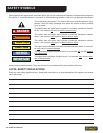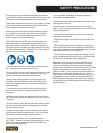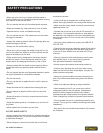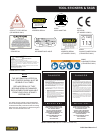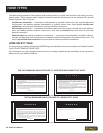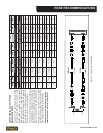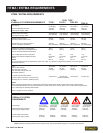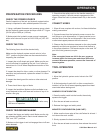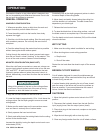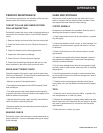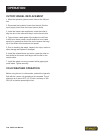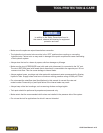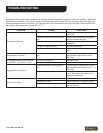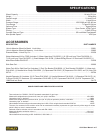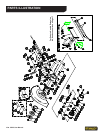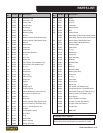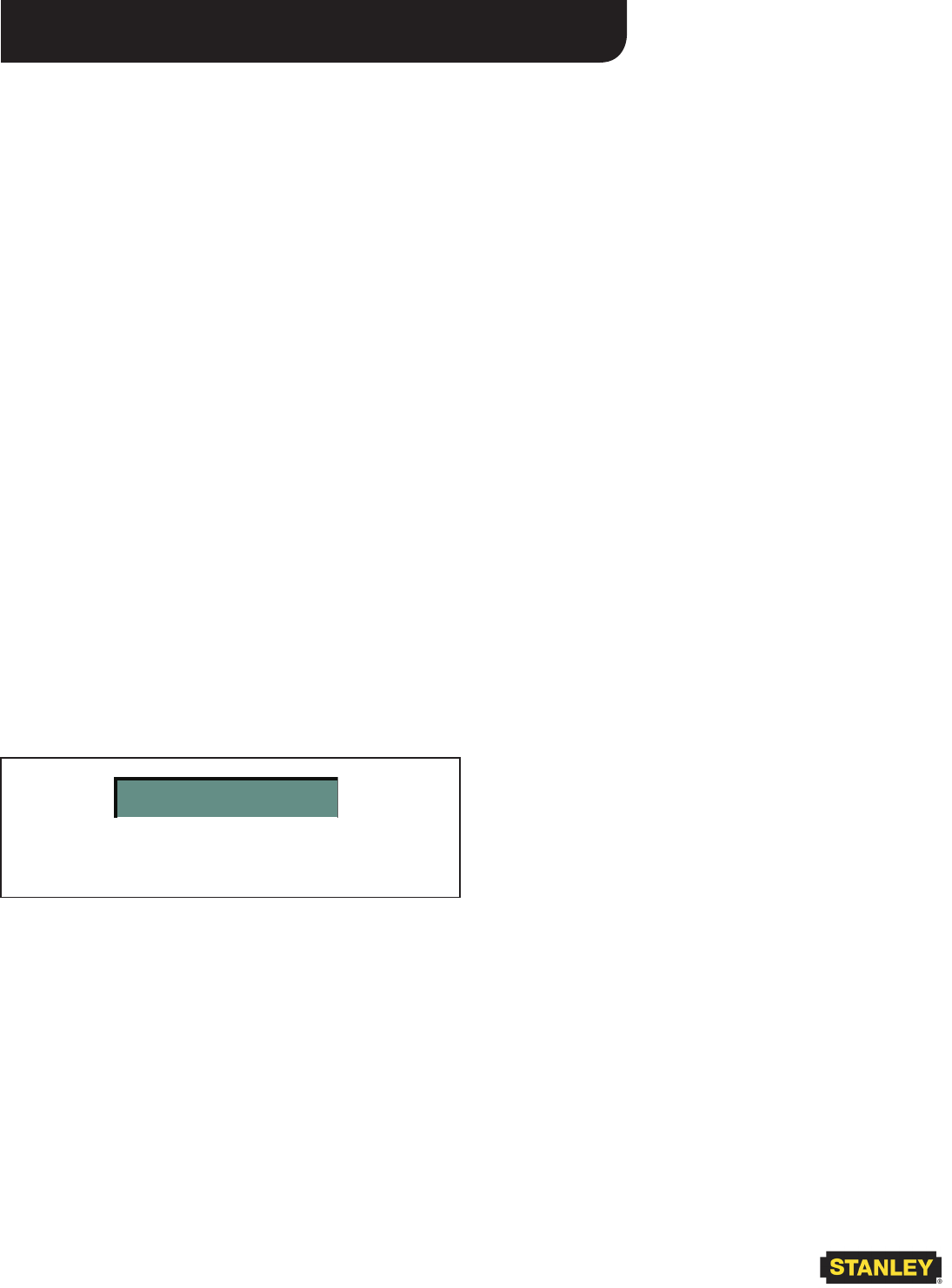
12 ► CO25 User Manual
OPERATION
If excessive vibration or any other defect is detected, stop
the tool immediately and determine the cause. Do not use
the tool until the problem is corrected.
GENERAL OPERATION
HANDHELD CONFIGURATION:
1. Whenever possible, clamp or hold down the work and
support it securely on both sides of the cut.
2. Press the safety catch into the handle, then slowly
squeeze the trigger.
3. Start the cut with the wheel rotating. Start the work gently
with consistent pressure. Do not bump the saw into the
workpiece.
4. Feed the wheel through the material as fast as possible
without slowing the wheel rotation speed.
Cutting through the material too slowly causes heat expan-
sion and can result in wheel “pinching” in the material. This
is one of the most common causes or wheel breakage.
MOUNTED CONFIGURATION (SAW CART):
When the cutoff saw is mounted on a saw cart, always use
a motor-type hydraulic system control valve to turn the saw
“ON” and “OFF”. All ports must be connected to the tank
(hydraulic system reservoir) when the control valve is in
neutral. Alternatively, use a direct line from the tool outlet to
the tank.
Keep all four wheels of the cart on the cutting surface
at all times. Do not tip the front of the cart up during
operation or while the blade is in motion.
1. Align the cut line indicator on the line to be cut.
2. Lower the blade to approximately 1/2 to 1-inch above the
cutting surface. Set the depth gauge to ensure accurate
cutting depth.
3. Make sure the water hose and its connections are se-
cure and there is a steady ow of coolant water.
4. Slowly squeeze the hand control lever.
5. Slowly and safely lower the rotating blade into the cutting
surface to the desired depth:
Increase the depth by turning the depth-control crank coun-
terclockwise (CCW).
IMPORTANT
Periodically look at the depth gauge and pointer to check
the actual depth of the cutting blade.
6. Move slowly and safely forward along the cutting line
until the desired cut is complete. The safe forward rate
depends on your blade type.
7. Release the hand control lever.
8. To raise the blade from of the cutting surface, wait until
the blade comes to a complete stop in the work material.
Turn the depth-control crank clockwise (CW) until the blade
clears the surface.
WET CUTTING
1. Make sure the cutting wheel is suitable for wet cutting.
2. When shutting down a wet-cutting operation:
a. Stop the tool.
b. Shut off the water.
Restart the tool and allow the wheel to spin off the excess
water.
BROKEN CUT-OFF WHEELS
Cut-off wheels designed for use with portable saws are
extremely tough. When used as directed, they are difcult
to break during normal use.
If a wheel breaks while operating the cut-off saw, investi-
gate the cause of the failure and correct the problem as
soon as possible. If you cannot determine the cause of
failure, contact the wheel manufacturer.
SHUTDOWN
1. Move the hydraulic system control valve to the “OFF”
position.
2. Disconnect the hydraulic hoses from the tool (rst the
input (supply) hose, then the output (return) hose).
3. Place dust plugs in the hose ends, couplers or tool ports,
as applicable.
4. Wipe the tool thoroughly with a clean dry cloth.
5. Clean any foreign matter from the cut-off wheel surfaces.



